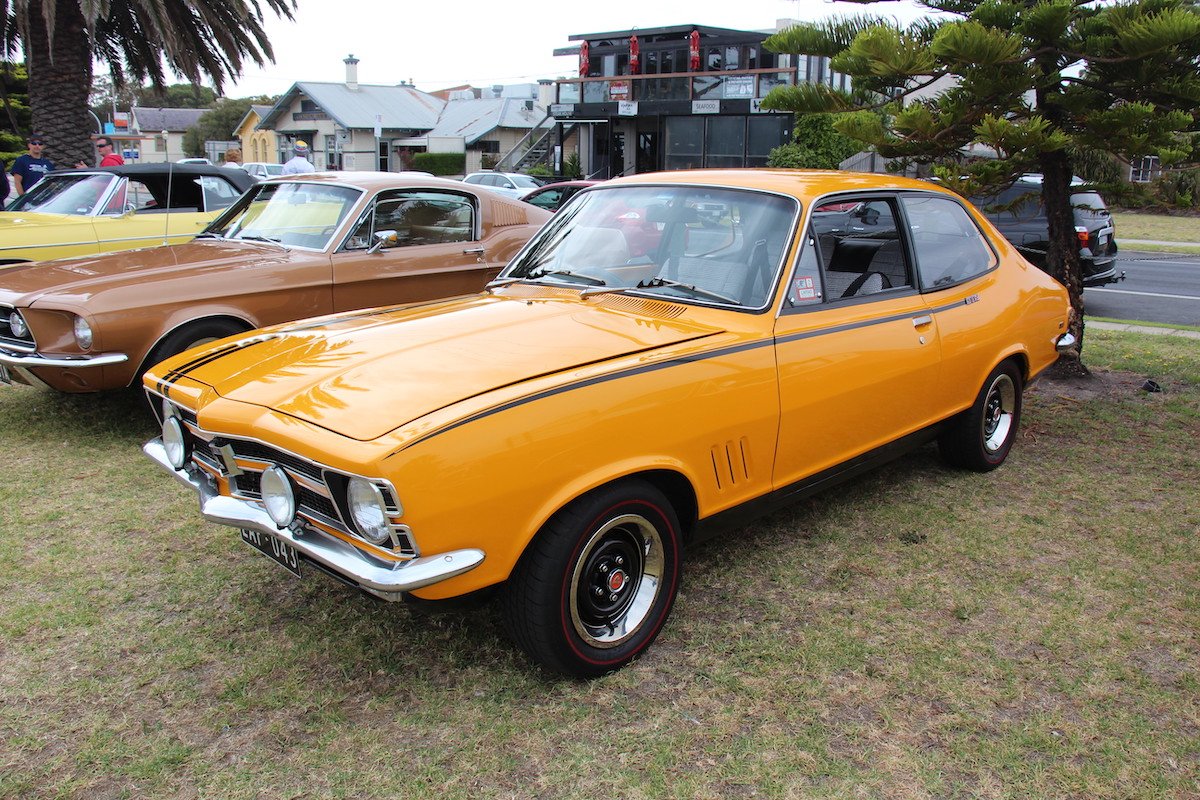Top Tips for Buying a Used Holden Torana LC-LJ GTR (1969-1974)
Cliff Chambers•15 December, 2024
-1200x800.jpg)
While the stylish and nimble LC GTR could give bigger cars a run for their money when it first launched, it was ultimately outshone by the eventual GTR XU-1 (Image: Jeremy/Wikimedia Commons, CC BY 2.0)
When Holden's new range of LC Toranas appeared in October 1969, the car that caused most excitement was the sporty and aggressive GTR.
For around 12-months the GTR reigned as ‘King of the Hill’ for the growing legion of Aussie enthusiasts attracted to the idea of a stylish, nimble and undeniably quick machine that, in the right hands and conditions could torment the bigger and more powerful V8-engined sedans and coupes of the day.
By the following year the GTR would itself need to step back and acknowledge the giant-killing potential of its triple carburettor derivative, the GTR XU-1, but what can’t be denied is that the GTR offered much more than marketing-department inspired bright colours and over-sized wheels.
Under the bonnet was Holden’s once-humble 161-cubic inch (2.6-litre) inline six-cylinder engine, enlivened with the addition of a dual-throat carburettor, revised cam and twin exhaust system which boosted power to a hearty 93kW, up from the standard engine’s 85kW.

In earlier LC models, Holden's humble 161ci engine featured and was given an 8kW power boost for the GTR (Image: Sicnag/Wikimedia Commons, CC BY-SA 4.0)
The dash was likewise modified to make space for a tachometer and extra gauges which gave the GTR interior a decidedly sporty look, while the seats adopted specially-made covers.
A four-speed manual transmission was the only option and with clever gearing and the little two-door’s relatively light 1013kg kerb weight the LC GTR could manage a 170km/h top speed and a brisk 10-second 0-96km/h dash.
Suspension changes meant that the GTR sat lower and had better body control than other six-cylinder cars in the Torana range, with the trade-off being a firmer ride. Front disc brakes were standard, as were sports wheels, the latter clad in red-wall cross-plies speed rated to 190km/h.
Affordability was crucial when pitching to Australia’s emerging ‘youth market’ and Holden worked some spreadsheet magic to bring the GTR to market at a keen $2766. That was just $190 more than the run-of-the-mill six-cylinder Torana SL and $30 less than Chrysler’s bigger and less gainly VF Valiant Pacer.
-1200x900.jpg)
Holden worked wonders with their spreadsheets in order to make the Torana affordable for younger buyers, with the GTR variant only charging a $190 premium at the time (Image: Jeremy/Wikimedia Commons, CC BY 2.0)
March 1972 brought the more civilised and powerful LJ Torana range. By then the GTR had lost some of its brashness but there were new colours and contrasting black-out panels to add street and showroom appeal. Fittingly, given the GTR’s performance positioning, the big news was under the bonnet where a larger capacity 3.3-litre '202' inline six produced a heartier 101kW.
Also new was a stronger M21 four-speed gearbox, Monaro-type steering wheel and redesigned seats with improved springing that didn't bounce occupants into the hood-lining over bumps.
Authentic GTRs can be identified by Build Code 82911 in their serial number. After that, the process becomes more difficult when confirming the body attached to the ID plate is authentic, and that the correct engine is still in place. If everything checks out then the next number to consider is the price.
Recent movements have seen GTR values maintain their relativities with triple-carburettor XU-1s, but finding sales to confirm price movements is difficult as they rarely sell publicly. However, it should be possible to buy a good, unmodified LC or LJ for between $80,000 and $100,000.
-1200x900.jpg)
The LJ Torana arrived in 1972, and it packed more of a punch with a larger 3.3-litre straight-six (Image: Jeremy/Wikimedia Commons, CC BY 2.0)
Things To Watch Out for When Buying a Used Holden Torana GTR (1969-1974)
Make sure that the car is a genuine GTR; if in doubt, engage a specialist
Be on the lookout for rust, particularly with older restorations where particular attention must be paid to the floors and quarter panels
Engine oil leaks
Sloppy steering requiring a replacement rack
Lowered suspension which allows the tyres to contact the bodywork
Sagging seats require professional repair
Valuation Timeline: Holden Torana GTR (1969-1974)
🛠️ Timeline
Investment Rating
8 / 10
Cliff Chambers

Get The Latest
Sign up for the latest in retro rides, from stories of restoration to community happenings.





